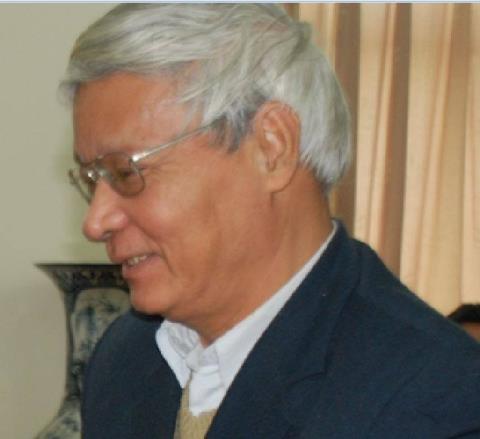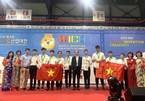Nguyen Duc Cuong, chair of VASA and leader of the project, speaks about the airship.

Nguyen Duc Cuong, chair of VASA
What are the most outstanding characteristics of the made-in-Vietnam airship? Why did you develop this product?
First of all, I have to emphasize that we don’t intend to compete with m products of large companies in the world in terms of speed, height and distance.
Our product targets the niche market. It flies slowly, at low height, used to carry travelers who want to do sightseeing from above. To do sightseeing, they don’t need to fly high and fast, but they need safety, good facilities and attractive prices.
| The Vietnam Aerospace Association (VASA) has successfully performed a trial flight of an airship from Vietnam Space Technology. The made-in-Vietnam airship will be used in the tourism sector. |
We have created a new flying vehicle with high tonnage which can take off and land right on the beach, ensuring comfort to travelers. It has low production cost, and therefore, can operate at low cost and people can fly with it with reasonable fee.
We plan to create an airship which can fly at the height of 200 meters, equal to the height of a 70-storey building, and the speed of 30-40 kilometers per hour. Regarding the tonnage, it can carry one pilot, two passengers, safety facilities and drinks.
The airship is called VASA-3 which has fly time of 60 minutes at maximum. The fee for sightseeing from the air is several million dong for 30-40 minutes.
A travel firm which spends VND3 billion to buy an airship to carry passengers with 50 percent of capacity will take back investment capital after several years. Manufacturers can make high profit because they don’t have to import technology from overseas.
The production cost is low, just VND1-2 billion, if they manufacture more than five airships. Meanwhile, tourism sites can attract more travelers with new kind of service, safe and economical.
At some hot air balloon festivals in Hue and Da Nang recently, passengers had to pay VND6.5 million for a ‘free-style flight’ (the flight depended on wind power, because the air balloons did not have engine) for 30-40 minutes.
In Phan Thiet City, a foreign company also provides flights with non-engine hot air balloons at the fee of nearly VND4 million.
In Germany, it cost 500 euros in 2018 to fly on Zeppelin-NT, an airship with engine.
With our science and technology, is it easy to manufacture this product?
I am sure we can. VASA successfully has implemented many projects at the state level. Quadrotor/multirotor/flycam technology is very popular these days. Many units in Vietnam, including VASA, can master the technology in both software and hardware.
Thanh Lich

Vietnamese students win gold medals at World Invention Creativity Olympic
Two inventions of Vietnamese students won gold medals from the World Invention Creativity Olympic taking place in South Korea from July 25 to 27.
 The Vietnam Aerospace Association (VASA) has successfully performed a trial flight of an airship from Vietnam Space Technology. The made-in-Vietnam airship will be used in the tourism sector.
The Vietnam Aerospace Association (VASA) has successfully performed a trial flight of an airship from Vietnam Space Technology. The made-in-Vietnam airship will be used in the tourism sector.